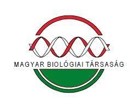Alternatív javaslatok a hazai halfauna sokféleségét megfelelően reprezentáló természetvédelmi területhálózat létrehozására
Absztrakt
Az édesvizek biológiai sokféleségének jelentős csökkenése miatt megalapozott, tervszerű védelmükre egyre nagyobb szükség van, amelyhez az objektív, rendszerszintű természetvédelmi tervezés módszerköre nagy segítséget nyújt. Munkánk célja egy olyan védett természeti területhálózat kijelölése volt, amivel kis területen és az országhatáron túlról érkező emberi hatásoktól viszonylag függetlenül biztosítható a halegyüttesek védelme Magyarországon. A védett területhálózat tervezése során egy optimalizációs algoritmusokon alapuló program (Marxan) használatával a legnagyobb biodiverzitással rendelkező, és egyben legkisebb összterületű vízgyűjtőket jelöltük ki. Figyelembe vettük a folyószakaszok hosszirányú összeköttetésének biztosítását és egyúttal a területhálózat minél kisebb mértékű széttagoltságát. Emellett értékeltük a nagyméretű folyók (Duna, Tisza), és a határfolyók (Dráva, Ipoly) fontosságát a területtervezés során. A hazai országos jelentőségű védett területek és az általunk védeni javasolt területhálózat együttes kiterjedése a nagyméretű folyók nélkül is mintegy 13710 km2, s véleményünk szerint ez már alkalmas lehet a biológiai sokféleség fenntartására. Számos védett folyóvízi halfaj hatékony megőrzéséhez azonban a határfolyók védelmére is kiemelt figyelmet kell fordítani.
Hivatkozások
Abell, R., Allan, J. D. & Lehner, B. (2007): Unlocking the potencial of protected areas for freshwaters. – Biol. Conserv. 134: 48–63.
Ball, I. R., Possingham, H. P. & Watts, M. (2009): Marxan and relatives: Software for spatial conservation prioritisation. Chapter 14 – In: Moilanen, A., Wilson, K. A. & Possingham, H. P. (Eds.): Spatial conservation prioritisation: Quantitative methods and computational tools. Oxford University Press, Oxford, UK, pp. 185–195.
Bivand, R. S. & Lewin-Koh, N. (2014): Maptools: Tools for reading and handling spatial objects. R package version 0.8-29. http://CRAN.R-project.org/package=maptools
Bivand, R. S. & Rundel, C. (2014): Rgeos: Interface to Geometry Engine – Open Source (GEOS). R package version 0.3-3. http://CRAN.R-project.org/package=rgeos
Dolezsai, A., Sály, P., Takács, P., Hermoso, V. & Erős, T. (2015): Restricted by borders: trade-offs in transboundary conservation planning for large river systems. – Biodiv. Cons. in press
Dudgeon, D., Arthington, A. H., Gessner, M. O., Kawabata, Z-I., Knowler, D. J., Léveque, C., Naiman, R. J., Prieur-Richard, A-H., Soto, D., Stiassny, M. L. J. & Sullivan, C. A. (2006): Freshwater Biodiversity: importance, threaths, status and conservation challenges. – Biol. Rev. 81: 163–182.
Elith, J., Graham, C. H., Anderson, R. P., Dudík, M., Ferrier, S., Guisan, A., Hijmans, R. J., Huettmann, F., Leathwick, J. R., Lehmann, A., Li J., Lohmann, L. G., Loiselle, B. A., Manion, G., Moritz, C., Nakamura, M., Nakazawa, Y., Overton, J. M., Peterson, A. T., Phillips, S. J., Richardson, K., Scachetti-Pereira, R., Schapire, R. E., Soberon, J., Williams, S., Wisz, M. S. & Zimmermann, N. E. (2006): Novel methods improve prediction of species’ distributions from occurrence data. – Ecography 29: 129–151.
Erős, T. (2007): Partitioning the diversity of riverine fish: the roles of habitat types and non-native species. – Freshwater Biol. 52: 1400–1415.
Filipe, A. F., Marques, T. A., Seabra, S., Tiago, P., Riberio, F., Moreira, da Cost, L., Cowx, I. G. & Collares-Pereira, M. J. (2004): Selection of priority areas for fish conservation in Guadiana river basin, Iberian Penninsula. – Conserv. Biol. 18(1): 189–200.
Hijmans, R. J., Cameron, S. E. & Parra, J. L. (2014): WorldClim version 1.4. Museum of Vertebrate Zoology, University of California, Berkeley. Available at: http://www.worldclim.org/ (last accessed 6 April 2014).
Hermoso, V., Linke, S., Prenda, J. & Possingham, H. P. (2011): Addressing longitudinal connectivity in the sytematic conservation planning for freshwaters. – Freshwater Biol. 56: 57–70.
Leathwick, J. R., Elith, J. & Hastiec, T. (2006): Comparative performance of generalized additive models and multivariate adaptive regression splines for statistical modelling of species distributions. – Ecol. Model. 199: 188–196.
Linke, S., Kennard, M. J., Hermoso, V., Olden, J. D., Stein, J. & Pusey, B. J. (2012): Merging connectivity rules and large-scale condition assessment improves conservation adequacy in river systems. – J. Appl. Ecol. 49: 1036–1045.
Margules, C. R. & Pressey, R. L. (2000): Systematic conservation planning, Insight review articles. – Nature 405: 243–253.
Martonné Erdős, K. (2004): Magyarország természeti földrajza I., Debreceni Egyetem Kossuth Egyetemi Kiadója, Debrecen, 245 p.
Milborrow, S., Hastie, T. & Tibshirani, R. (2014): Earth: Multivariate Adaptive Regression Spline Models. R package version 3.2-7. http://CRAN.R-project.org/package=earth
Moilanen, A., Leathwick, J. & Elith, J. (2008): A method for spatial freshwater conservation prioritization. – Freshwater Biol. 53: 577–592.
Pebesma, E. J. & Bivand, R. S. (2005): Classes and methods for spatial data in R. R News 5 (2), http://cran.r-project.org/doc/Rnews/.
Pressey, R. L. & Nicholls, A. O. (1989): Efficiency in Conservation Evaluation: Scoring versus Iterative Approaches. – Biol. Conserv. 50: 199–218.
QGIS Development Team (2012): QGIS User Guide. Online available: http://docs.qgis.org/1.8/pdf/QGIS-1.8-UserGuide-en.pdf.
R Core Team (2013): R: A language and environment for statistical computing. – R Foundation for Statistical Computing, Vienna, Austria. URL, http://www.R-project.org/.
Ricciardi, A. & Rasmussen, J. B. (1999): Extinction rates of North American freshwater fauna. – Conserv Biol. 13: 1220–1222.
Sanderson, E. W., Malanding, J., Levy, M. A., Redford, K. H., Wannebo, A. W. & Woolmer, W. (2002): The human footprint and the last of the wild. – BioScience 52: 891–904. http://dx.doi.org/10.1641/0006-3568(2002)052[0891:THFATL]2.0.CO;2
Sály, P., Takács, P., Kiss, I., Bíró, P. & Erős, T. (2011): The relative influence of spatial context and catchment- and site-scale environmental factors on stream fish assemblages in a human modified landscape. – Ecol. Freshw. Fish 20: 251–262.
Steenmans, C. & Büttner, G. (2006): Mapping land cover of Europe for 2006 under GMES. Proceedings of the 2nd workshop of the EARSeL SIG on land use and land cover, Bonn, Germany, 28-30 September, 2006: 202–207. http://www.eea.europa.eu/data-and-maps/data/clc-2006-vector-data-version-2
Strecker, A. L., Olden, J. D., Whittier, J. B. & Paukert, C. P. (2011): Defining conservation priorities for freshwater fishes according to taxonomic, functional, and phylogenetic diversity. – Ecol. Appl. 21(8): 3002–3013.






